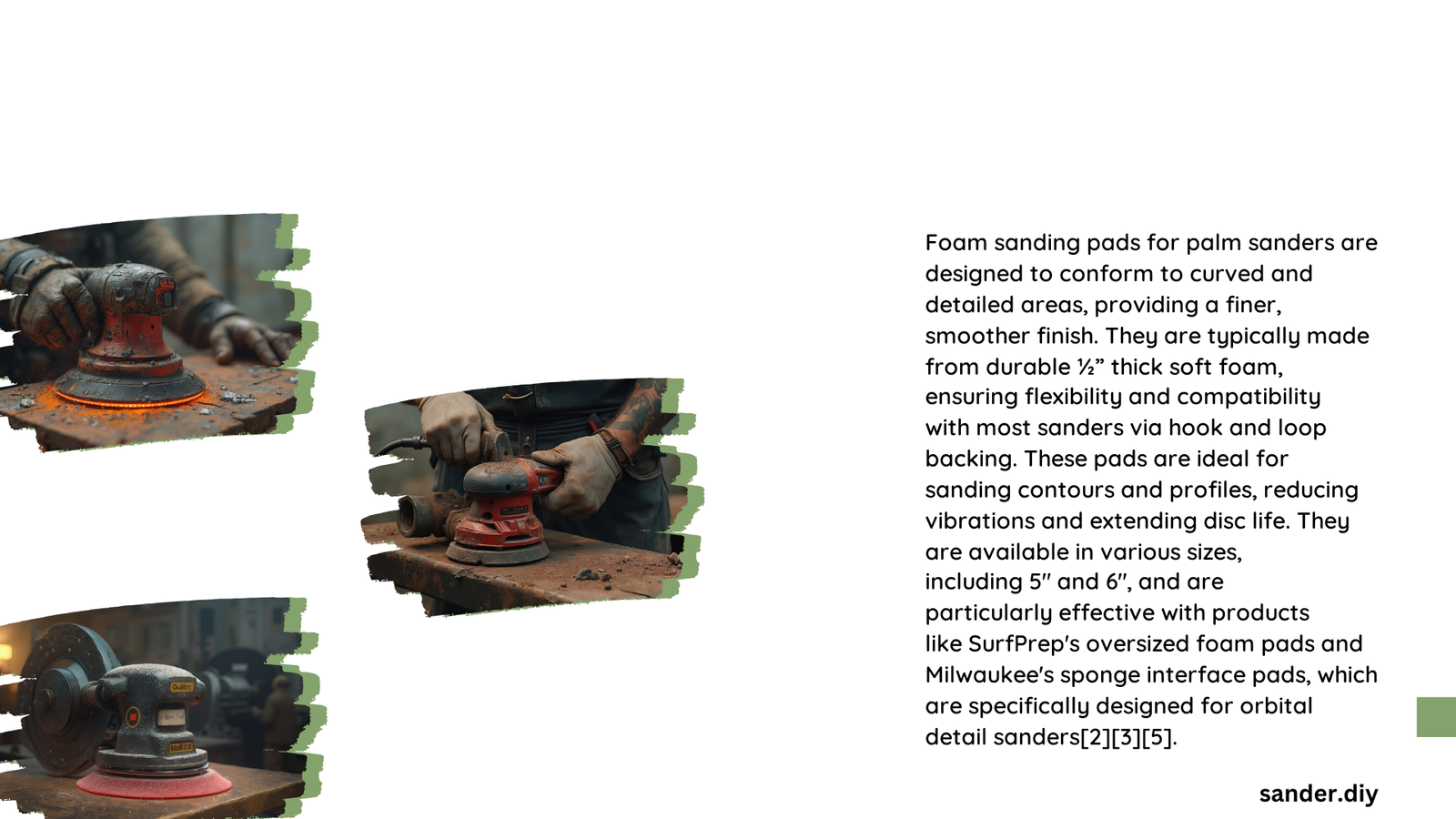Palm sander foam pads are crucial components for achieving smooth, professional finishes in woodworking and DIY projects. These versatile accessories come in various sizes, materials, and grit levels, designed to fit different palm sanders and tackle a range of sanding tasks. From removing old finishes to preparing surfaces for painting, palm sander foam pads offer flexibility and efficiency in surface preparation.
What Are the Dimensions and Materials of Palm Sander Foam Pads?
Palm sander foam pads come in various sizes and materials to suit different sanding needs. Here’s a breakdown of some popular options:
SurfPrep ProFoam Rectangle Abrasive Pads
- Dimensions: 3 1/8\” X 5 ¼\” (80mm X 133mm)
- Material: Highly flexible, tear-resistant foam with a clog-resistant coating
- Variants: Available in 1/2\” squishy and 5mm thin versions
Milwaukee Sponge Interface Pad
- Dimensions: Length 3.75 in, Width 3.625 in, Height 0.5 in
- Material: Flexible sponge material optimized for sanding contours and profiles
SabreCut GripTech PRO Orbital Sander Backing Pads
- Dimensions: 125mm (5 inch) diameter
- Material: Medium density polyurethane (PU) foam body attached to a hard plastic backing plate
How Do Grit Levels Affect Palm Sander Foam Pad Applications?

The grit level of a palm sander foam pad determines its sanding performance and application. Here’s a guide to different grit levels and their uses:
- Coarse Grits (60-80)
- Initial sanding
- Removing old finishes
- Smoothing rough surfaces
-
Preparing wood for further sanding
-
Medium Grits (120-150)
- General sanding tasks
- Smoothing wood surfaces
- Removing minor imperfections
-
Preparing surfaces for painting or staining
-
Fine Grits (220-240)
- Final sanding before applying finishes
- Ensuring a smooth surface
- Polishing and fine-tuning
What Are the Steps to Replace a Palm Sander Foam Pad?
Replacing a palm sander foam pad is a straightforward process. Follow these steps:
- Turn off and unplug the sander for safety
- Remove the old pad (pull off for hook and loop systems, unscrew for screw-secured pads)
- Inspect and clean the backing plate
- Attach the new pad, ensuring proper alignment
- Test the new pad to confirm secure attachment
Tools Required:
– Palm sander
– New foam pad
– Screwdriver or wrench (for screw-secured pads)
Estimated Time: A few minutes, depending on the attachment system
Potential Challenges:
– Ensuring proper alignment and secure attachment
– Thoroughly cleaning the backing plate to prevent debris affecting adhesion
What Are the Average Costs and Packaging Options for Palm Sander Foam Pads?
Palm sander foam pads are available at various price points and packaging options:
| Brand | Cost Range | Packaging |
|---|---|---|
| SurfPrep ProFoam Rectangle Abrasive Pads | $15.90 – $31.75 | Individual or grit packs |
| Milwaukee Sponge Interface Pad | $10-$20 (estimated) | Sold individually |
| SabreCut GripTech PRO Orbital Sander Backing Pads | £10.99 (approx. $14 USD) | Single packs |
How to Choose the Right Palm Sander Foam Pad for Your Project?
Selecting the appropriate palm sander foam pad depends on several factors:
- Sander Compatibility: Ensure the pad fits your specific palm sander model
- Surface Type: Consider the material you’re working on (wood, metal, plastic)
- Project Requirements: Determine if you need aggressive material removal or fine finishing
- Grit Level: Choose based on your sanding stage (coarse for initial sanding, fine for finishing)
- Pad Flexibility: Opt for flexible pads for contoured surfaces, denser pads for flat areas
What Are the Benefits of Using Palm Sander Foam Pads?
Palm sander foam pads offer several advantages:
- Versatility: Suitable for various materials and surface types
- Efficiency: Quick and easy replacement for continued productivity
- Improved Finish: Provides smoother results compared to traditional sandpaper
- Reduced Clogging: Many foam pads feature clog-resistant coatings
- Contour Adaptation: Flexible pads conform to curved or irregular surfaces
How to Maintain and Extend the Life of Palm Sander Foam Pads?
Proper maintenance can significantly extend the lifespan of your palm sander foam pads:
- Clean pads regularly with compressed air or a cleaning stick
- Store pads flat to prevent warping or damage
- Rotate pads during use to ensure even wear
- Avoid applying excessive pressure while sanding
- Use the appropriate grit for the task to prevent premature wear
By following these maintenance tips, you can maximize the efficiency and longevity of your palm sander foam pads, ensuring consistent performance across various sanding projects.
References:
– https://surfprepsanding.com/product/rectangle-sander-profoam-pads/
– https://www.milwaukeetool.com/Products/48-80-5402
– https://sabrecut.com/product/1pc-125mm-medium-density-pu-orbital-sander-backing-pad-for-bosch-osscspb125m/
